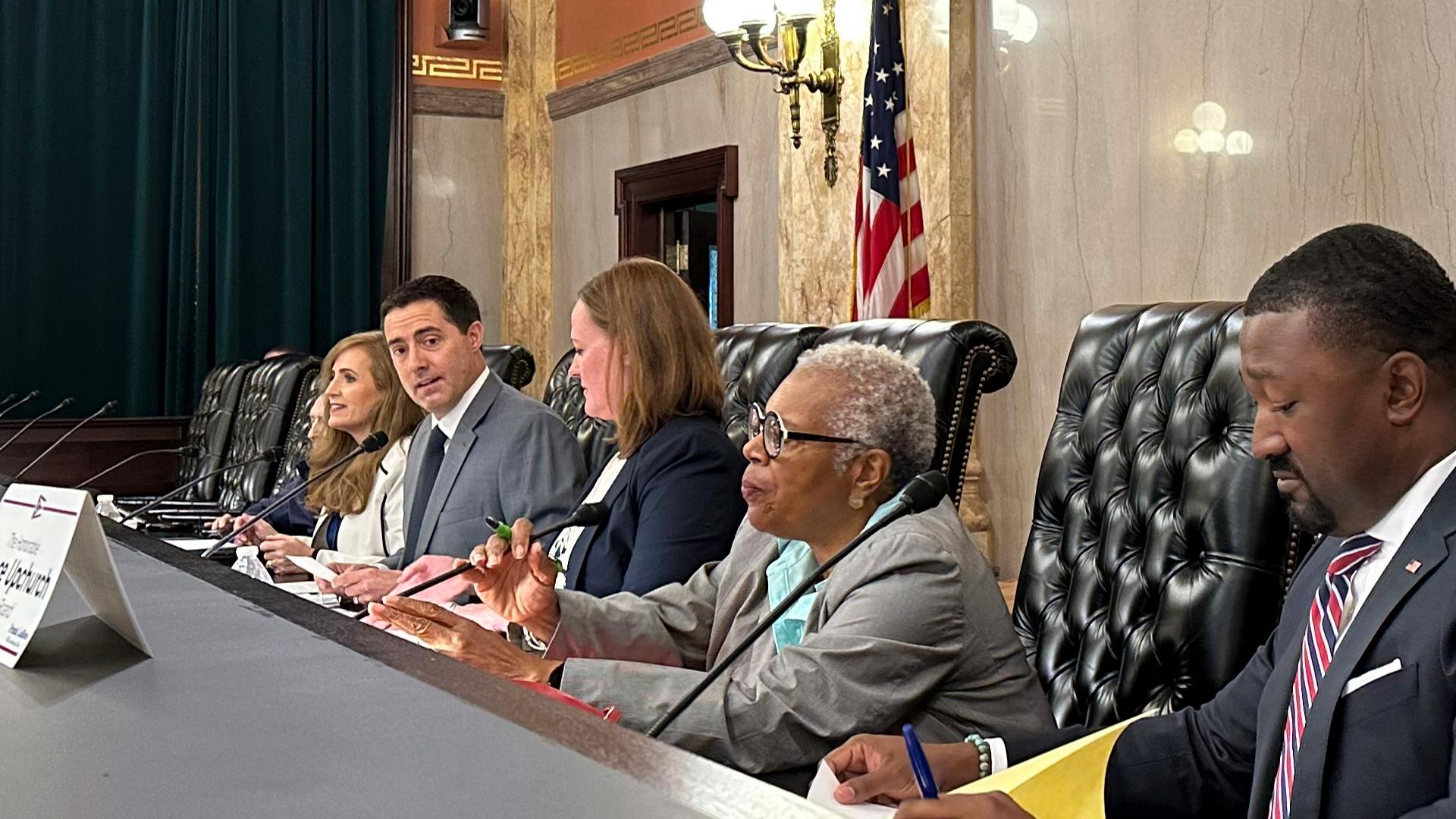COLUMBUS, Ohio — This story originally appeared in the Ohio Capital Journal.
As promised, supporters of an anti-gerrymandering amendment have asked the Ohio Supreme Court to intervene regarding language the Ohio Ballot Board approved for the November ballot, saying the language violates the Ohio Constitution.
A brief filed Monday with the state’s highest court cites constitutional provisions that dictate the way in which titles and language can appear on Ohio ballots, according to the court document written by attorneys for Citizens Not Politicians, the authoring group for the redistricting reform.
“This November, Ohio voters will be asked to consider a proposed constitutional amendment that will remove redistricting power from politicians and entrust it to a citizens’ redistricting commission,” attorney Don McTigue wrote. “The politicians are fighting back with an absolute fusillade of falsehoods.”
McTigue called the language approved by the board “what may be the most biased, inaccurate, deceptive and unconstitutional ballot language ever adopted by the Ohio Ballot Board.”
The board approved the language that will be the summary for the newly minted Issue 1 in a 3-2 vote at its Aug. 16 meeting, with Republican Ohio Secretary of State Frank LaRose, Republican state Sen. Theresa Gavarone, and citizen member William N. Morgan voting in favor of the language.
The proposed amendment would replace the current Ohio Redistricting Commission made up of politicians including the governor, secretary of state, auditor and two lawmakers from each party, with a 15-member citizens commission made up of equal numbers of Republican, Democratic, and independent citizens with no elected positions or political ties.
According to the ballot language approved by the split board – which LaRose, the ballot board chairman, said at the meeting he wrote with the help of his staff – the redistricting initiative would “repeal constitutional protections against gerrymandering” and “eliminate the longstanding ability of Ohio citizens to hold their representatives accountable for establishing fair state legislative and congressional districts.”
In a last minute change to the LaRose language made during the board meeting, Gavarone replaced the word “manipulate” in a paragraph about changing the districts lines, so that it instead states the new commission is required to gerrymander the boundaries of state legislative and congressional districts, a change supported in the meeting by LaRose and fellow board member William Morgan.
“This gets it entirely backward,” McTigue countered in the Citizens Not Politicians court brief. “In fact, the amendment would ‘ban partisan gerrymandering and prohibit the use of redistricting plans that favor one political party and disfavor others.'”
McTigue said the language of the summary includes “numerous fatal flaws” and includes “campaign rhetoric designed to persuade – not impartial, factual information meant to inform voters.”
Citizens Not Politicians wasted no time after the Ohio Ballot Board approved the LaRose-written language to pledge a challenge to the language in court, with former Ohio Supreme Court Chief Justice Maureen O’Connor calling the approval and the lead-up to it “one grotesque abuse of power after another from politicians desperate to protect the current system that only benefits themselves and their lobbyist friends.”
“Secretary of State Frank LaRose voted seven times for maps that courts ruled were unconstitutional, and this week he violates the constitution with objectively false ballot language,” O’Connor said in a statement.
LaRose was a member of the Ohio Redistricting Commission when it passed six Statehouse district maps and two congressional maps over the two years the group worked. Among those maps, five Statehouse maps and both congressional maps were ruled unconstitutionally partisan gerrymanders by the Ohio Supreme Court.
Ohio law requires ballot titles to be a “true and impartial statement of the measures in such language that the ballot title shall not be likely to create prejudice for or against the measure.”
The language that goes before voters is also regulated by Ohio law, with the constitution stating the full text of the amendment is not required, but the language used can not “mislead, deceive or defraud the voters.”
“Whether the amendment is good policy is for Ohioans to decide – not the Ballot Board – and is not before the court,” McTigue wrote in Monday’s briefing. “The Ballot Board’s duty is clear, the legal standards well-defined and the ballot title and language before the court flagrantly violate those standards.”
The state supreme court faced a similar case in August of last year, when supporters of the reproductive rights amendment on the ballot last November sued to challenge another summary written by LaRose and staffers that they said was deceptive.
Ohioans United for Reproductive Rights asked the Ohio Supreme Court to order the ballot board to use the full text of the amendment, or to “correct blatant inaccuracies” and use “language that fully, accurately and impartially describes the amendment’s scope and effects.”
The Ohio Supreme Court ordered the ballot board to tweak only one of many issues the advocates pointed to, a paragraph in which the ballot board said “the citizens of the state of Ohio” rather than “the state of Ohio.”
Nevertheless, the abortion amendment passed with 57% of the vote.
No matter what redistricting ballot language appears on this year’s election ballot, the full text of the amendment itself remains the same language authored by Citizens Not Politicians and supported by more than 535,000 Ohio voters who participated in a signature campaign that allowed the measure to appear on the November general election ballot. The ballot board’s summary does not change the actual anti-gerrymandering amendment being proposed.
Read more from the Ohio Capital Journal HERE.

